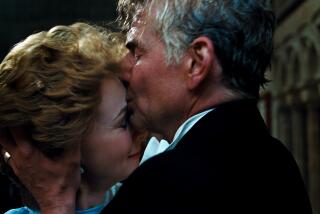MUSIC REVIEWS : Master Chorale Presents a Pious ‘St. John’
- Share via
In Bach’s “Passion According to St. John”--presented Sunday by the Los Angeles Master Chorale under guest conductor Jon Washburn at the Dorothy Chandler Pavilion--we hear the composer putting his art wholly in the service of his religion; he is a Christian first, here. That presents the modern concert hall audience with several problems.
To begin with, for Bach the Christian a certain propriety had to be observed when telling the story of the Passion, and this did not permit the inclusion of showy Italian arias and rambunctious choruses a la Handel’s oratorios, in comparison to which Bach’s “St. John” fairly creaks with devotion. This is because it was actually a liturgical event (not a concert or theatrical presentation), in which the congregation participated by singing its many straightforward “chorales.”
There is, too, the fact that the work contains a large proportion of recitative, notably the entire part of the Evangelist--who narrates the story even to the point of interjecting “he said” and “she said.” The relatively few arias unwind in calm prayer. The choruses are divided between the short, agitated bursts of the mob (called turba ) and those pious, congregational chorales.
Washburn’s presentation used a reduced force (though still larger than Bach’s) and the nice addition of original instruments in some of the aria accompaniments. He enlisted a stellar quartet of vocal soloists, remarkably headed by Christopher M. Cock as the Evangelist, whose graceful, light and poetic tenor made for a hardly dispassionate narrator. Baritone Daniel Lichti offered a fluid and dignified Jesus; soprano Elissa Johnston gave purity and vibrancy to her two arias, countertenor Steven Rickards clarity and finesse to his.
The Master Chorale produced hefty force and rhythmic point in the turba , cozy warmth in the chorales and provided sturdy soloists as needed. The Sinfonia orchestra played neatly, most of the time. Washburn--who leads choirs in Phoenix and Vancouver--showed a sure sense of contrast, directed transitions firmly and coaxed sensitive accompaniments. The supertitles were distracting, though necessary given the amount of recitative. All in all, it proved a fascinating glimpse at religious life in 1724 Leipzig.
More to Read
The biggest entertainment stories
Get our big stories about Hollywood, film, television, music, arts, culture and more right in your inbox as soon as they publish.
You may occasionally receive promotional content from the Los Angeles Times.










